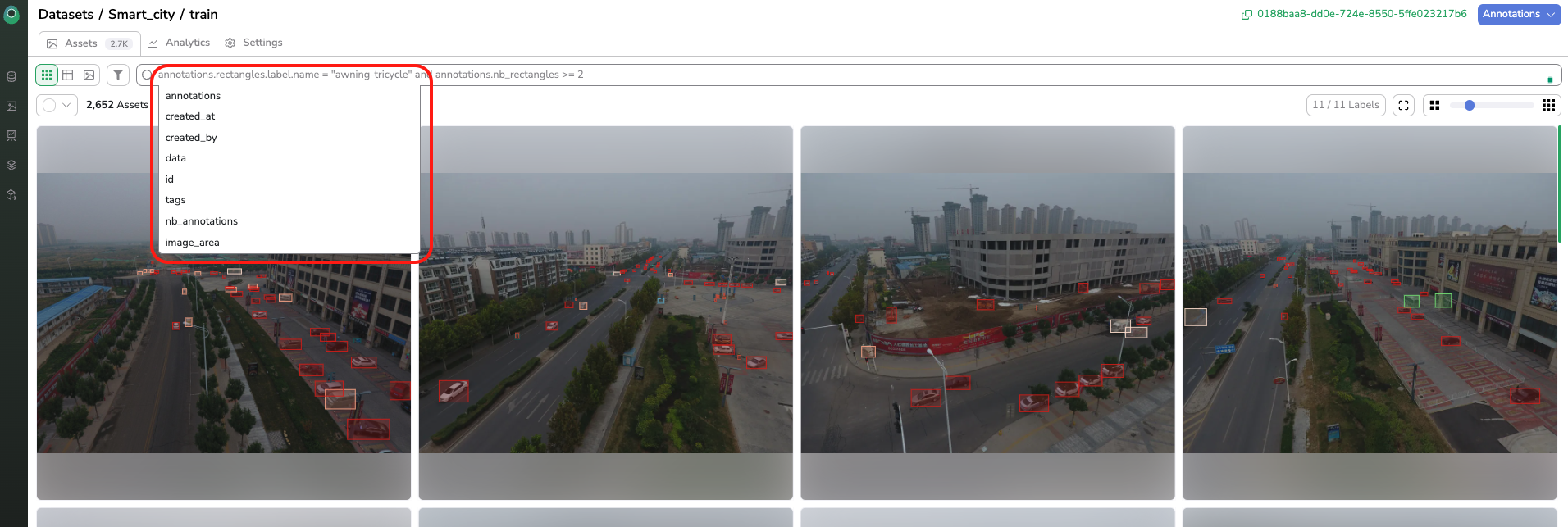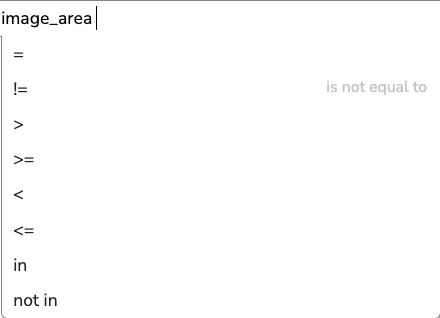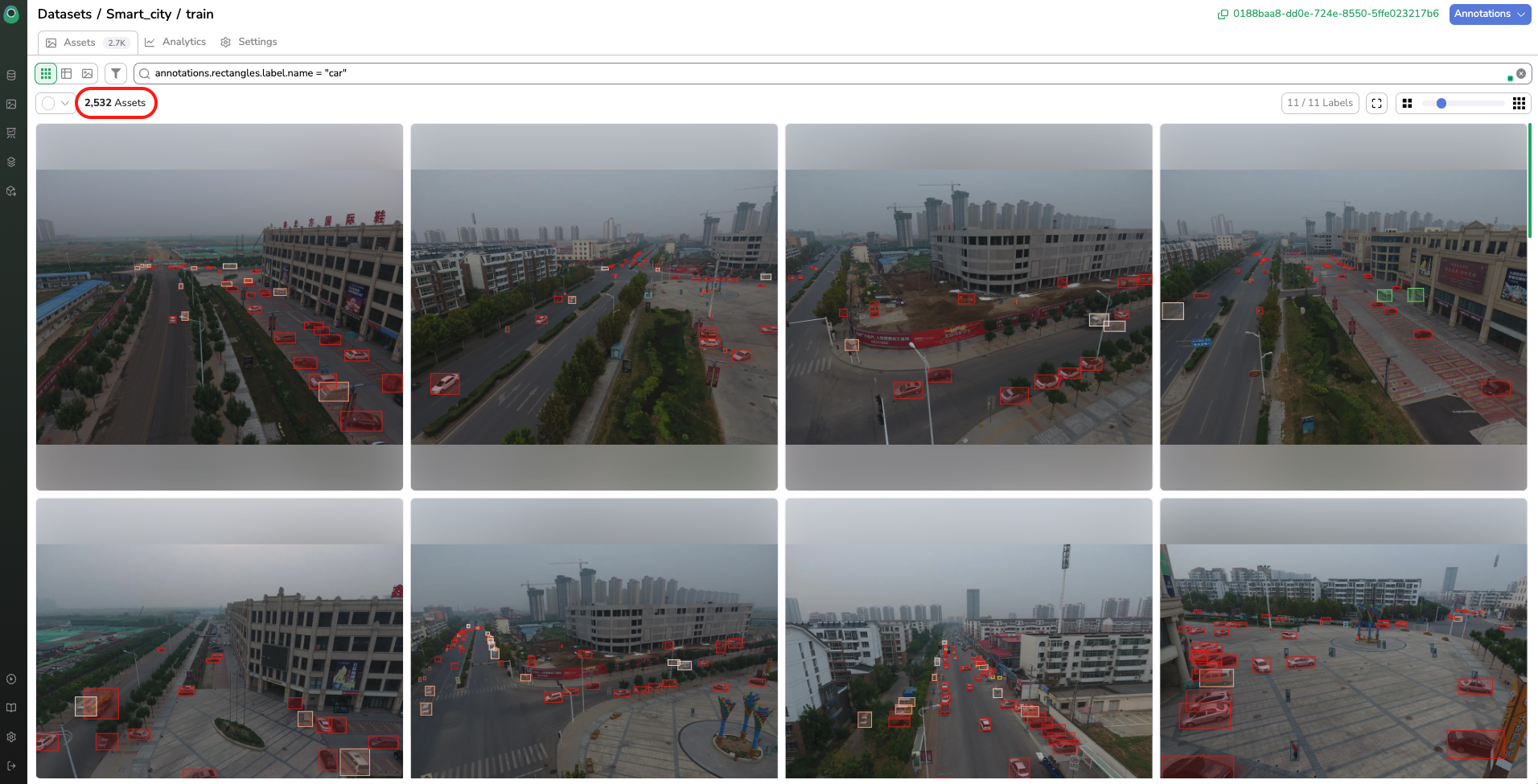Dataset - Query language
Now that we are able to visualize, version, and annotate your Asset the next step would be able to explore your DatasetVersion in an efficient way.
1. Search Bar
To do so, the best tool is the Search Bar and its associated Query language.

Search Bar
This Search Bar is accessible in each image overview of the Picsellia platform.
2. Query language
The Query language is used in the Search Bar to filter among Data, AssetTags, Annotations from the DatasetVersion.
It allows users to access all Data and Asset properties and sub-properties to search on them to find Data satisfying the query.
A. Objects & Metadata available for searching
As for now, we are dealing with the Search Bar available in the Datalake, you will be able to search on all the objects and Metadata associated with Picsellia Data:

Auto-completion engine
Please note that in this list some fields are other Picsellia objects that are linked to Picsellia Data and Annotations. It means that from the DatasetVersion Search Bar, you can go deeper into the Picsellia Object Schema to filter on Data that are linked to another Picsellia Object.
For instance, we can retrieve all the Asset from the DatasetVersion that have a car annotated as a rectangle with this query:
annotations.rectangles.label.name = "car"
To browse through the Query language across the Picsellia Object Schema, it is highly recommended to use the auto-completion proposed by theSearch Bar.
In the end, the last element you are filtering on must be a property of either Asset or of an object linked to Annotation.
B. Comparison
Depending on the format of the object property you are filtering on, several comparison signs are proposed by the auto-completion engine:
- For strings:

String operators
- For integers or floats:

Integers & floats operator
C. Logical connector
In order to perform the most accurate filtering possible among your Datalake, you can create complex queries leveraging the and & or logical connectors.
At the end of the first query element after leaving one space, the auto-completion engine will propose you the logical connector to your query.
3. Asset satisfying the query
Asset satisfying the queryAfter having written your query, you just need to press the Enter key to run the query. The Asset from your DatasetVersion satisfying the query will then be displayed.
To delete a query from the Search Baryou just need to click the cross icon to the right of the Search Bar
It means that after having filtered through the Search Bar on your Datalake, the only Asset displayed in your Assets overview are the ones matching the query. The number of Data matching is displayed on top of the DatasetVersion as shown below:

Query results
Updated 7 months ago